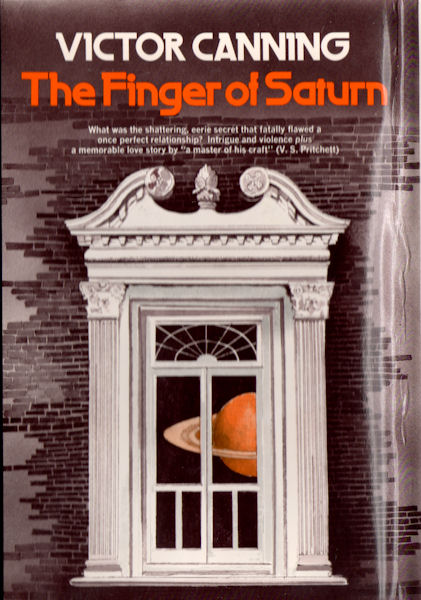
Heinemann
first edition

US first
edition

Pan paperback

German translation
 Heinemann first edition |

US first edition |
 Pan paperback |

German translation |
The BookThe novel is narrated in the first person (unusual for Canning) by Robert Rolt, a landowner who has had a brief career in the Foreign Office but now runs the Dorset estates he has inherited from an older brother. Two years before the book begins his wife Sarah vanished. A man from a secret branch of the Foreign Office comes to him with surveillance film of a woman called Angela Starr who resembles his wife. Rolt is immediately sure it is her. He meets her. She tells him she is an amnesia victim with no memory going back more than a year, but agrees on seeing photographs and handwriting samples that she must be Sarah Rolt. She returns to live with him. They visit Sarah's mother in Italy. There is a mysterious incident in which a speedboat may have been trying to kill them while they are swimming. Meanwhile the secret services are trying to get Rolt to help them investigate International Industrial Systems Limited, a firm in which Sarah's mother has a large investment. And Sarah still has no recollection of her missing year. The final explanations involves an element of science fiction, the only time that Canning drifted into this genre. It also maintains the thread, started in The Python Project and culminating in Birdcage, of the essential nastiness of the British secret services. |
Publishing HistoryThis was published by Heinemann in 1973 at £2/10/-, with the American edition following a year later. There was a Book Club Associates edition in 1973 using the same dust jacket art in a smaller format, and a Pan paperback in 1975. There are two interesting name links. A mysterious figure in this book called Albert Chinn recalls John Chinn, the sailor who is the central character of Canning's 1940 novel Atlantic Company. Sarah Rolt is given the name Angela Starr after her amnesia. This anticipates Sir Andrew and Lady Christine Starr, the owners of Avoncourt in Canning's 1982 novel Vanishing Point. The main setting of the story is Dorset, but parts of it are set near Tavistock in "Caradon Abbey". Caradon was the name Canning gave to the Cornish village of Calstock in his novel The Viaduct, and Calstock also figures in his late novel Fall from Grace. Canning spent several childhood years in Calstock at the end of the first world war. |

|
| Athelhampton House, near Dorchester, probable source for "Rolthead" |

|
| (Roses at Athelhampton) “And what are my favourite flowers?” |
 |
| (Sarah Rolt has vanished on her way to go shopping in Shaftesbury.) "So far as could be told her handbag contained her purse with a few pounds in it and her cheque book. The bank was the Westminster at Shaftesbury." (p. 37) The bank then and now. The larger building is now an estate agency. |
 |
| Cotehele House, Calstock
in Cornwall Probable source for "Caradon Abbey" |